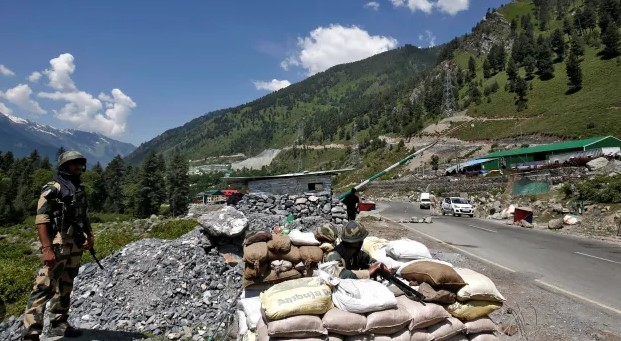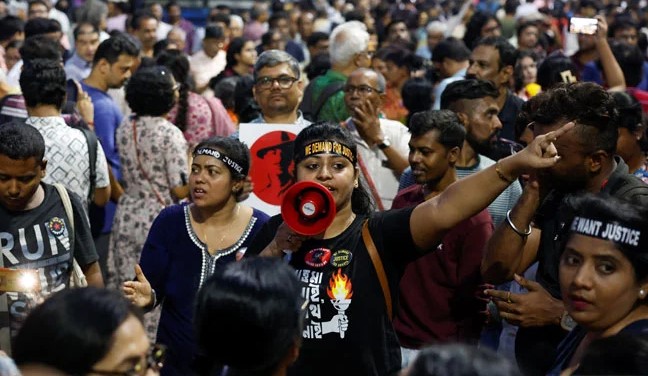WORLD NEWS

As the war in Ukraine continues to rage, a troubling trend has emerged: an unprecedented number of soldiers are deserting the army. This year alone, prosecutions for desertion have reportedly exceeded 30,000—potentially much higher—marking a significant increase compared to previous years. This rising tide of desertions reflects not only the grim realities faced by Ukrainian troops on the front lines but also broader implications for the nation’s military strategy.
Rising Desertion Rates
Desertion has become so widespread that the Ukrainian parliament, Verkhovna Rada, decriminalized first-time desertion attempts on August 20, 2024, provided that those caught agree to return to service. Analysts note that since the onset of the conflict, criminal cases for desertion have dramatically escalated—from just 9,000 in 2022 to approximately 22,000 in 2023. Current estimates suggest that around 51,000 criminal cases related to desertion have been initiated between January and September 2024, according to various sources, including the Kyiv Post and British daily The Times.
This spike in desertion raises questions about the motivations behind such drastic measures. Reports indicate that low morale and physical exhaustion among soldiers are the primary drivers. Many troops have endured grueling conditions, often engaged in relentless combat without adequate breaks or rest periods.
Conditions on the Front Lines
The conditions faced by Ukrainian soldiers are dire. Troops are allowed only two ten-day vacations each year, but manpower shortages frequently postpone these much-needed breaks. Frustrations have reached a boiling point, with some soldiers openly expressing that serving time in prison might be preferable to enduring what seems like an endless deployment on the battlefield.
The war has exacted a heavy toll on Ukraine’s military personnel. Estimates of Ukrainian casualties vary widely, with Western sources suggesting that around 80,000 soldiers may have been lost in the conflict. The mounting desertions are exacerbated by significant manpower shortages, with reports indicating that Ukrainian soldiers are often outnumbered on the battlefield, facing ratios of five to one against Russian troops in some instances.
Factors Contributing to Desertion
Several factors contribute to the rising desertion rates:
Exhaustion and Low Morale: The prolonged conflict has drained soldiers physically and mentally. Initial enthusiasm has faded as many soldiers realize the war is a long-term commitment with no clear end in sight.
Inadequate Resources: Soldiers frequently report insufficient weaponry and ammunition, leading to a sense of helplessness. Accounts describe troops unable to engage the enemy due to a lack of firepower, which breeds feelings of guilt and frustration.
Conscription Laws: Ukraine’s martial law mandates military service for young men, with recent changes lowering the eligible drafting age from 27 to 25. While some argue for a flexible approach to conscription, the rigid rules leave little room for those seeking to avoid combat.
Public Sentiment: The ongoing war has led to debates within Ukraine about conscription laws and military strategy. Many citizens are questioning the effectiveness of the government’s approach to enlistment and mobilization.
Implications for the War Effort
The increasing rate of desertions poses a significant challenge to Ukraine's military capabilities. Analysts argue that the current situation reflects deeper issues within the army, including inadequate training and support for enlisted personnel. While the government seeks to mobilize more soldiers, the ongoing desertion crisis threatens to undermine these efforts.
Internationally, the situation raises alarms about Ukraine’s long-term viability in the conflict. As the war drags on, the Ukrainian government faces pressure to improve conditions for soldiers and ensure they are adequately equipped to confront Russian forces.
Conclusion
The surge in desertions highlights the precarious state of Ukraine's military amid ongoing conflict. As soldiers continue to abandon their posts, it becomes increasingly clear that the government must address underlying issues of morale, resources, and support to restore faith in the military and its mission. Without decisive action, the trend of desertion may continue to jeopardize Ukraine's war efforts in the months ahead.




